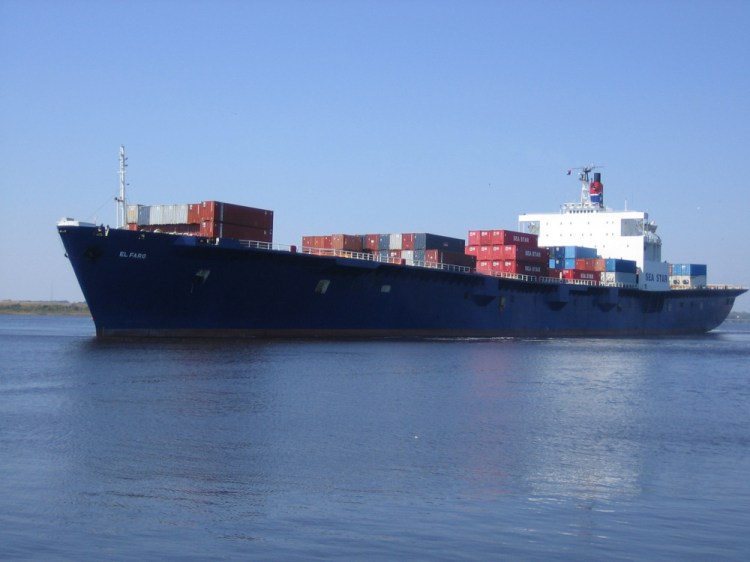A Navy search team has found what is believed to be the wreckage of the El Faro, a cargo ship that sank Oct. 1 during a hurricane with four Mainers on board, including the captain.
The National Transportation Safety Board said the team found the wreckage, at a depth of about 15,000 feet, about 1:30 p.m. Saturday using sonar equipment towed behind a Navy ship, the Apache.
The Navy said it will send down a remotely operated vehicle, the CURV-21, to confirm the identity of the vessel and survey the wreckage. That could take place as early as Sunday, the NTSB said.
Navy sonar scans indicated that the 790-foot ship was in one piece and upright on the ocean floor, the NTSB said in a news release Saturday night. The wreckage was found in the vicinity of the last known position of the ship, which was near Crooked Island in the Bahamas.
The El Faro, with 33 crew members, left Jacksonville, Florida, for San Juan, Puerto Rico, on Sept. 29 as Tropical Storm Joaquin was growing into a powerful hurricane near the Bahamas. As the El Faro neared the hurricane, it reported that it had lost propulsion and was listing. Investigators said the ship got as close as 20 miles to the hurricane’s eye. The most powerful winds of a hurricane are usually in the eye wall.
Contact with the ship was lost on Oct. 1. The Coast Guard searched for the El Faro and survivors for six days. Finally, authorities ended the search and said they believed the ship sank with all hands aboard.
They included the captain, Michael Davidson, 53, of Windham; Danielle Randolph, 34, of Rockland; Michael Holland, 25, of Wilton; and Dylan Meklin, 23, of Rockland. All were graduates of Maine Maritime Acadamey, along with Mitchell Kuflik, of Brooklyn, New York, who graduated from the academy in May.
The NTSB said the Apache initially searched for the ship using a towed pinger locator, designed to pick up the signal of a device attached to the vessel’s voyage data recorder. The batteries for the pinger are designed to last about 30 days.
That effort was unsuccessful, but the NTSB said the crew on the Navy ship then used a device call Orion, which is a towed side-scan sonar system. That device picked up the image of what is believed to be the El Faro during the fifth of 13 planned surveys.
The unmanned, remote-controlled CURV-21 will be fitted with a video camera and should be able to dive to the site of the wreckage, attempt to confirm that it is the El Faro, and try to recover the voyage data recorder, the NTSB said. The board said that will take about 15 days in ideal conditions.
The voyage data recorder is a ship’s version of an airplane’s “black box.” It weighs about 55 pounds, is the size of a suitcase and records data about the ship and its position, along with communications between the captain and TOTE Maritime Puerto Rico, the ship’s owner.
Send questions/comments to the editors.



Success. Please wait for the page to reload. If the page does not reload within 5 seconds, please refresh the page.
Enter your email and password to access comments.
Hi, to comment on stories you must . This profile is in addition to your subscription and website login.
Already have a commenting profile? .
Invalid username/password.
Please check your email to confirm and complete your registration.
Only subscribers are eligible to post comments. Please subscribe or login first for digital access. Here’s why.
Use the form below to reset your password. When you've submitted your account email, we will send an email with a reset code.